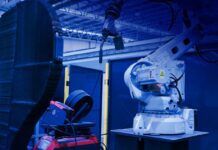
Media Release by Gas Energy Australia
A new study comparing costs and emission profiles in switching from gas to electricity in Victorian homes and businesses dispels the myth that electric appliances are cheaper and lower emitting.
“The analysis is compelling, exposing the flawed assumptions being peddled that electricity is better than gas on costs and emissions. It proves that switching to all-electric appliances doesn’t add up,” Gas Energy Australia CEO Brett Heffernan said today.
The Victorian Residential Case Study by Frontier Economics for Gas Energy Australia and the Australian Gas Industry Trust, details the costs and emissions in replacing LPG appliances with high-efficiency electric appliances or cheaper, lower-efficiency electric appliances.
Switching to High-Efficiency Electric Appliances: Considering energy bills and appliance costs, continuing to use LPG appliances remains lower cost for the representative household, Swan Hill in Victoria, until the 2040s, when using LPG appliances and using electrical appliances are very similar in cost.
This scenario shows total emissions are marginally lower if using high-efficiency electrical appliances.
- Result: The household would incur $11,871 in upfront costs, save $718.33 on annual bills and reduce emissions by 467kg per year (or 9kg per week, equivalent to a typical BBQ cylinder).
“This means, if homeowners fork-out for all high-efficiency electrical appliances in their home, it would take more than 12 years to get a return on investment for a relatively small reduction in their CO2 output,” Mr Heffernan said.
“Given switching to these electrical appliances only reduces emissions by 9kg a week, the price of carbon abatement is a whopping $282.65 per tonne, which is 16-times higher than the average price per tonne of buying Australian carbon credit units at $17.35.
“It makes for very expensive and inefficient carbon abatement.”
Switching to Cheaper, Less Efficient Electric Appliances: Emissions are lower if the customer sticks with using LPG appliances.
- Result: The household would incur $6,520 in upfront costs, save $212.19 on annual bills, while increasing their emissions by a substantial 960kg per year.
“In this scenario, emissions from LPG appliances are significantly lower, which means switching to electrical appliances actually increases emissions,” Mr Heffernan added.
“These scenarios dispel the myth that electricity is, by default, cheaper and lower-emitting than gas.
“People need to go in with their eyes open. If families and businesses can afford to splurge on high-end electrical appliances, they can make a modest CO2 saving. But you have to ask yourself, what’s the point of switching when the carbon saving is marginal and significantly more expensive or, indeed, actually higher emitting than sticking with gas?”
In both scenarios, the cost of switching to electrical appliances does not include the costs of likely power supply upgrades (from Phase 1 to Phase 3 wiring), which, depending on appliances can take total outlays up to $42,000 per premise. Frontier Economics’ Cost of switching from gas to electric appliances in the home exposed these costs for GAMAA earlier this year.
“These findings are a reality check for Victorians, as well as government and opposition parties. The report contradicts the notion that electricity is a more cost-effective short, medium or long-term option to achieve net zero emissions in homes and businesses,” Mr Heffernan said.
“The study demonstrates that Australian LPG can deliver net zero energy, over the same timeframe as electricity, for household cooking, heating and hot water, as well as in commercial business use.
“Rather than incurring the additional costs and inconvenience of switching appliances, and upgrading home wiring to cope with the higher loads, gas providers can produce renewable, net zero gases for use with existing appliances. It’s a much better option for everyone.
“We provided these findings to Minster D’Ambrosio and Shadow Minister Southwick two weeks ago. We have made it clear to both sides of politics that we are not seeking any government assistance – no handouts, subsidies or project funding.
“We simply seek a level playing field so Victorian homeowners and businesses can choose the path to net zero that best suits them, free from governments clumsily trying to pick winners.
“With energy possibilities in flux, the best policy approach is technology-neutrality. Over the next 5, 10, 20 years new technologies are likely to emerge and it would be poor policy to deny families and businesses access to those options. Locking in electricity as the only option doesn’t make sense.
“The Victorian Gas Substitution Roadmap, released just a few months ago, is already redundant in light of emerging green gases and their user-friendly applicability, as detailed in the study.
“We urge a policy reset so Victorians can capitalise on the opportunities arising now and into the future, without saddling taxpayers, families and businesses with financial pain for little to no climatic gain.
“The gas economy underpins more than $6 billion in Victorian economic activity (1.3% of Gross State Product), while supporting 27,553 jobs across the state. It is irreplaceable for industrial heat and chemical feedstock in meeting the state’s aspirations for boosting its modern manufacturing base.
“The case being pushed for over 2 million Victorian households and 65,000 businesses to switch to all-electric appliances is drastically overcooked. With this report mapping out a clear path to net zero for gas providers and their customers, it’s time for a rethink.”




















